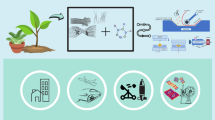Abstract
Natural fibres have significant advantages over glass, as an alternative fibre reinforcement material. Natural fibres are more environmentally friendly, healthier and safer, and cause less abrasive wear of processing equipment. On the other hand, their mechanical properties show a large scatter, and are at best equivalent to glass (natural fibres, however, have a lower density). Further disadvantages of the current natural fibre reinforced materials are their moisture sensitivity – which makes them prone to swelling and rotting – their smell and their current cost level.
Experiments with the application of Natural Fibre Mat Thermoplastics (NMT) on current automotive products proved the disadvantages. On the other hand it yielded several new research themes concerning property limits and gave insight in the area's where to optimize in order to get a broad application of natural fibre reinforced plastic products.
Looking towards the long term, other alternatives, like bio-composites or all-PP composites should be further explored.
Similar content being viewed by others
References
Symalit GMT Information, Kennwerte Entwicklungsmaterial, NM30PP, 28.02.1997.
GE Plastics Europe, AZDEL Product Information PM10300, 13.09.94.
Author information
Authors and Affiliations
Rights and permissions
About this article
Cite this article
de Bruijn, J.C.M. Natural Fibre Mat Thermoplastic Products from a Processor's Point of View. Applied Composite Materials 7, 415–420 (2000). https://doi.org/10.1023/A:1026554610834
Issue Date:
DOI: https://doi.org/10.1023/A:1026554610834




